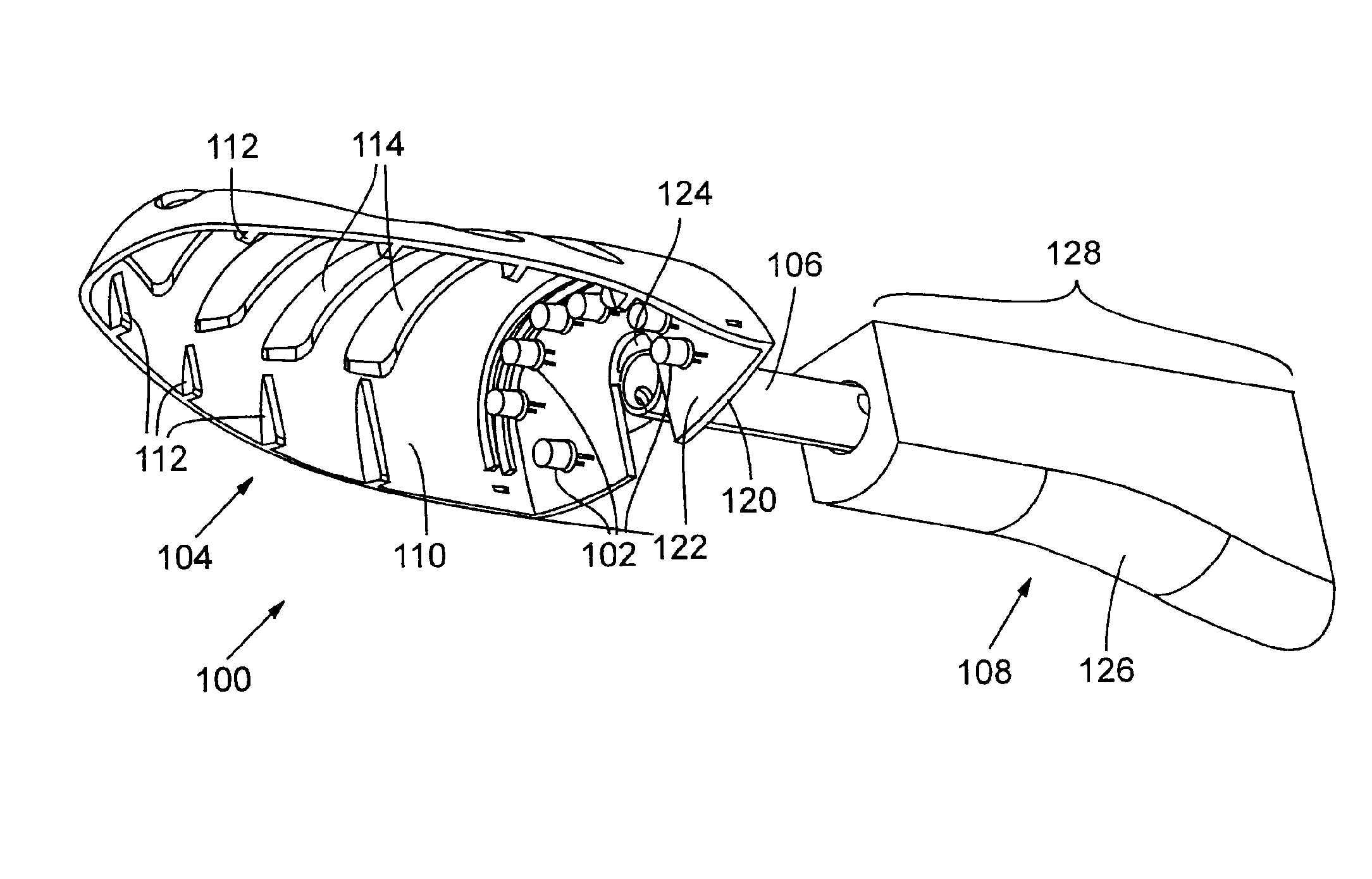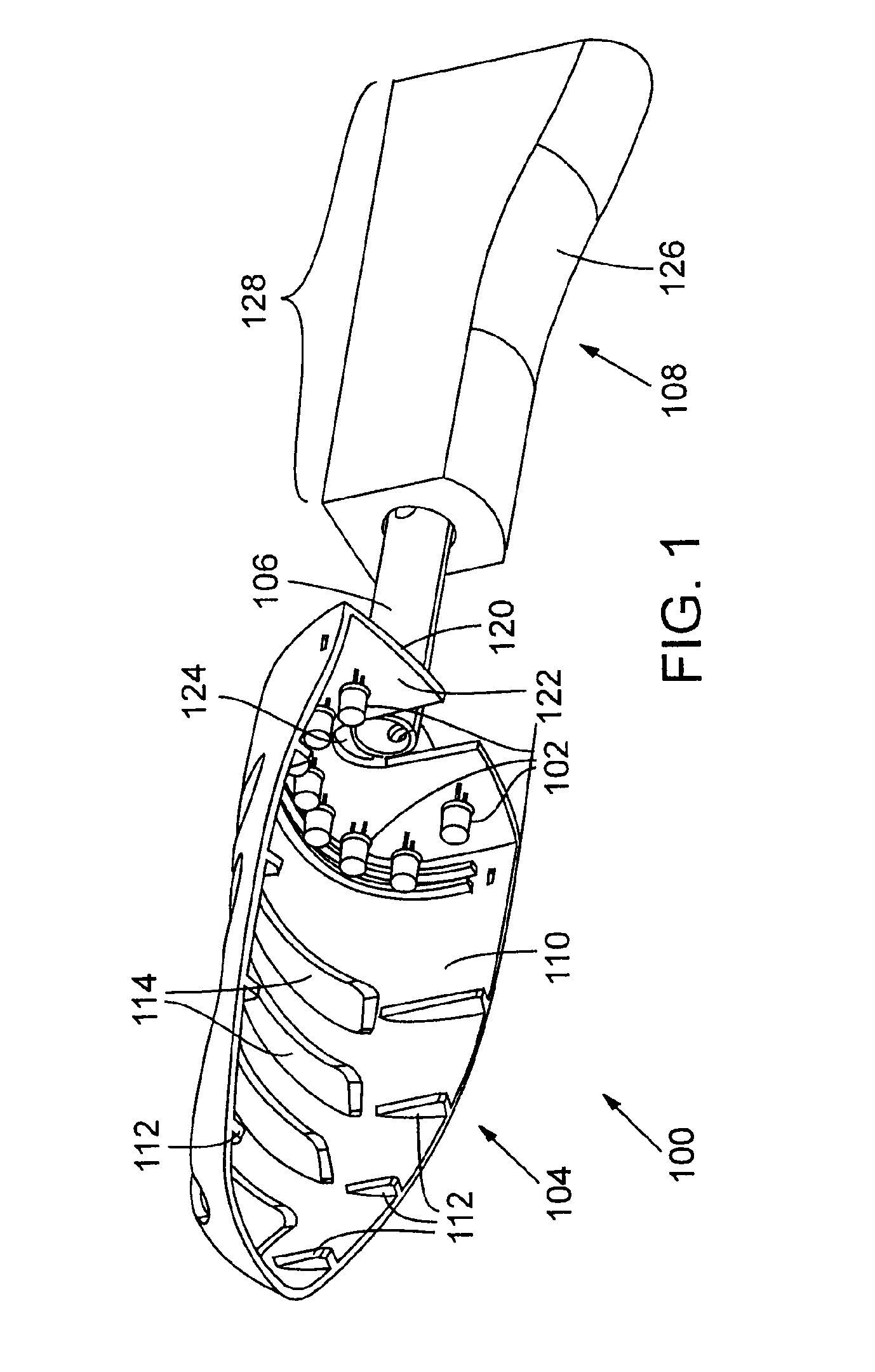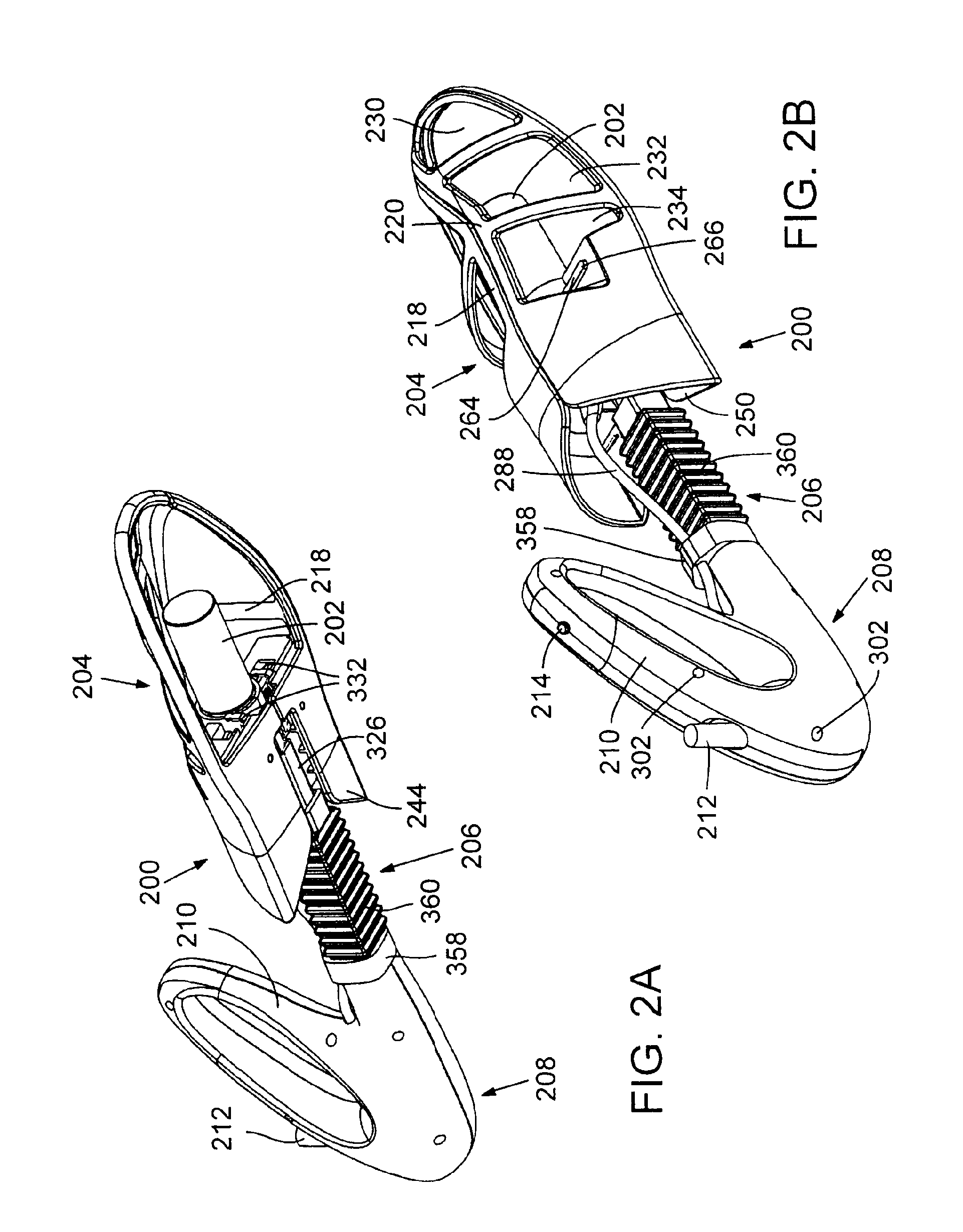Integrated footwear sanitizing and deodorizing system
a technology of footwear, which is applied in the field of integrated footwear sanitizing and deodorizing system, can solve problems such as light leakage, and achieve the effects of removing dampness found inside the shoe, less expensive, and convenient acquisition
- Summary
- Abstract
- Description
- Claims
- Application Information
AI Technical Summary
Benefits of technology
Problems solved by technology
Method used
Image
Examples
first embodiment
[0033]FIG. 1 shows, as a first embodiment, a shoe tree 100 configured to accommodate a semi-circular linear array of LEDs 102 that, in a preferred embodiment, radiate germicidal UV light, or white light including a UV component, into the toe of a shoe in which shoe tree 100 is inserted. A UV LED that emits light within the germicidal range and is suitable for use in LED array 102 is a Model No. UVTOP255-BL-T039, available from Roithner LaserTechnik, Vienna, Austria. Visible light (blue or white) LEDs, which are readily available, can be used to inhibit or prevent further growth of microorganisms in the shoe. Shoe tree 100 includes a hollow forepart 104 connected by an extensible one-piece cylindrical spine 106 to a heel section 108.
[0034]Forepart 104 is a curved half-shell structure having an inner surface 110 that supports multiple inwardly directed, spaced-apart structural tabs 112 and having multiple generally rectangular, elongated slots 114 that are spaced apart in a transverse...
second embodiment
[0035]FIGS. 2A, 2B, 3A-3G, and 4-7 show, as a second embodiment, a sanitizing shoe tree 200 in which a UV germicidal bulb 202 is installed, instead of LED array 102 used in shoe tree 100. Shoe tree 200 includes a hollow forepart 204 connected by a spring-loaded extensible spine 206 to a heel section 208. Electronic components enabling UV safety features are concealed throughout heel section 208, spine 206, and hollow forepart 204 and are, therefore, not apparent from the exterior of shoe tree 200. Heel section 208 terminates in a closed loop-shaped handle 210 to facilitate length adjustment; spring-loaded extensible spine 206 allows linear motion into and out of heel section 208; and hollow forepart 204 features large openings, or windows, of non-uniform size and shape through which light can propagate into the interior of a shoe. A power supply cord 212 extends from the rear of heel section 208 and provides electrical power for delivery to UV germicidal bulb 202 as described below....
PUM
 Login to View More
Login to View More Abstract
Description
Claims
Application Information
 Login to View More
Login to View More - R&D
- Intellectual Property
- Life Sciences
- Materials
- Tech Scout
- Unparalleled Data Quality
- Higher Quality Content
- 60% Fewer Hallucinations
Browse by: Latest US Patents, China's latest patents, Technical Efficacy Thesaurus, Application Domain, Technology Topic, Popular Technical Reports.
© 2025 PatSnap. All rights reserved.Legal|Privacy policy|Modern Slavery Act Transparency Statement|Sitemap|About US| Contact US: help@patsnap.com



